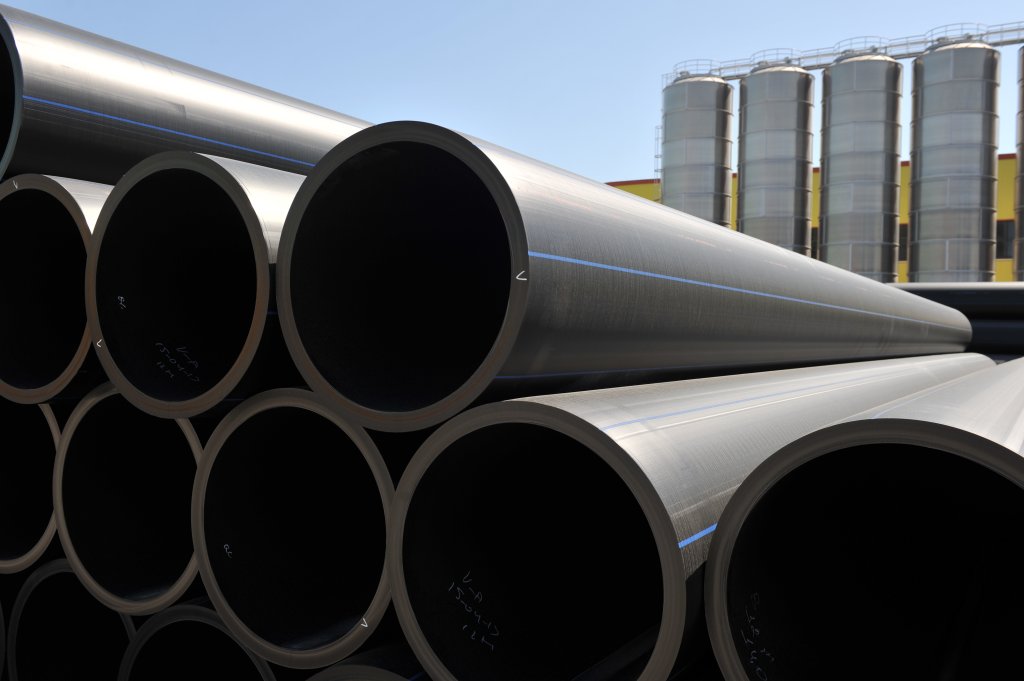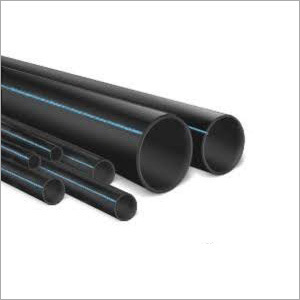Discover the Manufacturing Refine Behind High-Quality HDPE Pipe and Its Applications
The production process of high-quality HDPE pipes is complex and systematic. It starts with the choice of basic materials that improve efficiency. Following this, ethylene goes through polymerization to develop resin, which is then shaped through extrusion. Quality assurance is paramount, ensuring that the final item meets strict requirements. Nonetheless, the trip of HDPE pipelines doesn't end with manufacturing. Their applications across different sectors reveal a wider relevance worth examining.
Comprehending HDPE: Qualities and Advantages

High-density polyethylene (HDPE) is a functional thermoplastic recognized for its sturdiness and resistance to numerous environmental elements. This material shows excellent tensile stamina, making it suitable for requiring applications. Its low-density framework adds to a light-weight product, assisting in ease of taking care of and installment. HDPE likewise showcases amazing resistance to chemicals, which reduces deterioration when exposed to harsh substances.
The product's reduced dampness absorption further enhances its durability, making it optimal for usage in pipelines and storage tanks. In addition, HDPE is immune to ultraviolet (UV) radiation, making certain that items keep their stability also when revealed to sunlight. In addition, its flexibility permits the development of detailed shapes without compromising stamina. The green nature of HDPE, commonly originated from recycled materials, includes in its allure, advertising lasting methods in manufacturing. Generally, these buildings and advantages make HDPE a preferred option for numerous commercial and customer applications.
Basic Material Choice for HDPE Production
The option of resources for HDPE manufacturing is necessary to verify the end product meets the desired requirements and quality requirements. High-density polyethylene (HDPE) is primarily produced from polymerized ethylene, derived from fossil gas such as gas or petroleum. The high quality of these feedstocks substantially affects the mechanical and thermal residential or commercial properties of the final HDPE.
Ingredients additionally play a substantial function in enhancing HDPE's performance, consisting of antioxidants, UV stabilizers, and colorants, which improve toughness and resistance to ecological elements. The option procedure should consider not just the chemical composition of the raw products however also their handling qualities to guarantee effective manufacturing.
The sourcing of raw products must prioritize sustainability and conformity with environmental regulations, as responsible methods are critical in today's market. Inevitably, cautious raw material option lays the foundation for producing high-grade HDPE pipelines appropriate for varied applications.
The Extrusion Refine: Shaping HDPE Pipe
The extrusion process plays an essential role fit HDPE pipes, starting with meticulous material preparation techniques that guarantee perfect circulation and consistency. Similarly crucial is the design of the die, which directly affects the last measurements and surface quality of the pipe. With each other, these variables contribute considerably to the efficiency and top quality of HDPE pipe production.
Material Preparation Methods
Reliable production of HDPE pipes begins with thorough material preparation techniques, specifically the extrusion procedure. During this stage, high-density polyethylene material is very first dried out to remove wetness, making certain ideal circulation features. The material is after that fed right into the extruder, where it undertakes home heating and melting, changing right into a thick state. This home heating procedure is meticulously regulated to keep the product's honesty and efficiency. The liquified HDPE is required with a die, shaping it right into a continual pipeline kind. Correct temperature administration during extrusion is vital, as it directly impacts the product's properties and the last item high quality. When shaped, the HDPE pipeline is cooled down and cut to defined sizes, prepared for subsequent handling and applications.
Die Style Significance
Precision in die design plays an essential duty in the extrusion process of HDPE pipelines. The die functions as the final shaping device, directly affecting the pipe's measurements, wall thickness, and surface area finish. A properly designed die assurances uniform product flow, minimizing problems such as abnormalities and weak points. The geometry of the die must be maximized to accommodate the details properties of HDPE, including its thickness and thermal habits throughout extrusion. Furthermore, the cooling rate of the product as it travels through the die can noticeably impact the pipeline's structural honesty. As a result, purchasing sophisticated die technology is essential for producers intending to create high-quality HDPE pipes that satisfy sector requirements and client expectations.
Quality Assurance Measures in HDPE Manufacturing
Numerous factors affect the quality of HDPE pipeline production, effective quality control measures are important to assure uniformity and dependability in the last item (custom hdpe pipe manufacturing Midland TX). Key quality control practices consist of strenuous material evaluation, confirming that the raw polyethylene fulfills well-known criteria for purity and thickness. Throughout the extrusion process, parameters such as temperature level, stress, and cooling time are closely kept track of to maintain dimensional precision and architectural integrity
Furthermore, post-production screening is vital; producers often perform hydrostatic examinations to evaluate the pipe's strength to 1 2 reducer and resistance to pressure. Aesthetic examinations for surface area issues further improve quality control. Qualification from relevant standards companies, like ASTM or ISO, offers an added layer of reputation. By applying these comprehensive quality assurance measures, suppliers can reduce problems, boost performance, and make sure that the HDPE pipelines meet the specific demands of various applications, ultimately causing consumer satisfaction and count on the product.
Applications of HDPE Pipe Throughout Industries
HDPE pipelines are utilized across different fields due to their resilience and convenience. In water circulation systems, they guarantee effective distribution, while in wastewater management, they offer reliable services for waste transport. Furthermore, farming irrigation networks profit from HDPE's resistance to rust and adaptability, making it a perfect selection for modern farming practices.

Water Circulation Solutions
A significant number of industries count on high-density polyethylene (HDPE) pipes for effective water circulation systems. Known for their durability and resistance to rust, HDPE pipelines are widely utilized in community water supply networks, agricultural irrigation, and commercial applications. Their light-weight nature promotes easy handling and setup, minimizing labor prices and time. In addition, HDPE pipes can fit different stress degrees, making them ideal for both low and high-pressure systems. hdpe pipe fittings Midland TX. The versatility of the material allows for smooth integration into existing infrastructure, reducing the need for substantial excavation. Furthermore, HDPE's resistance to chemical leaching warranties that the water delivered continues to be safe and tidy, making it an ideal selection for preserving the high quality of potable water across numerous fields
Wastewater Monitoring Solutions
Effective water circulation systems additionally pave the method for ingenious wastewater monitoring services, where high-density polyethylene (HDPE) pipes play a substantial role. Popular for their resilience and resistance to rust, HDPE pipelines are excellent for transferring wastewater in different setups. Their versatility permits easy installation in complex atmospheres, lessening the demand for extensive excavation. Additionally, HDPE's smooth interior surface decreases friction, improving flow rates and effectiveness. These pipelines are additionally immune to chemical leaching, making certain that impurities do not endanger the surrounding setting. Industries, municipalities, and treatment centers increasingly count on HDPE pipelines for their integrity and long life, making them a recommended selection for modern-day wastewater monitoring systems. This adaptability emphasizes the essential relevance of HDPE pipelines across various applications.
Agricultural Irrigation Networks
Agricultural watering networks profit considerably from using high-density polyethylene (HDPE) pipes, which offer effective and trusted water distribution to crops. HDPE pipes are lightweight, making them very easy to move and set up, while their flexibility enables various configurations in diverse surfaces. These pipes demonstrate outstanding resistance to rust, chemicals, and UV radiation, guaranteeing toughness in harsh farming atmospheres. In addition, their smooth interior surface area lessens rubbing loss, enhancing water flow and minimizing energy expenses associated with pumping. The long life of HDPE pipes, frequently going beyond 50 years, contributes to lower maintenance and replacement costs. Farmers progressively rely on HDPE pipes to boost irrigation performance and promote sustainable farming practices, eventually leading to improved crop returns and source preservation.

Future Trends in HDPE Pipeline Technology
As the demand for lasting and efficient facilities expands, developments in HDPE pipeline technology are poised to change various markets. Arising trends consist of the assimilation of wise technologies, such as sensing units and IoT capabilities, which assist in real-time monitoring of pipe conditions, lowering maintenance prices and avoiding leakages. Furthermore, the growth of sophisticated production techniques, such as 3D printing, is making it possible for the production of facility, customized pipeline styles that cater to particular task needs.
Moreover, the concentrate on recycling and round economy methods is driving the technology of HDPE pipelines made from recycled products, boosting sustainability. Improved jointing techniques, such as electro-fusion and mechanical fittings, are also improving installment efficiency and reliability. Finally, the expanding focus on ecological laws is pressing manufacturers to adopt greener production processes, making certain that HDPE pipelines not just meet industry standards however likewise foster an even more lasting future for facilities advancement.
Regularly Asked Inquiries
Just How Does HDPE Contrast to Various Other Plastic Products?
HDPE outmatches lots of other plastic products relating to resilience, chemical resistance, and flexibility. Its reduced density and high tensile toughness make it excellent for different applications, typically exceeding alternatives in both performance and longevity.
What Are the Ecological Effects of HDPE Production?
The ecological effects of HDPE production consist of greenhouse gas exhausts, energy consumption, and prospective air pollution from manufacturing procedures. In addition, improper disposal can cause dirt and water contamination, raising issues concerning lasting ecological impacts.
Can HDPE Piping Be Recycled?
Yes, HDPE pipes can be recycled. Lots of centers accept used HDPE for processing, changing it into new items. This reusing contributes to sustainability initiatives, decreasing plastic waste while preserving resources and power in the production cycle.
What Is the Life-span of HDPE Pipes?

Exactly How Do Temperature Level Variations Impact HDPE Pipeline Performance?
Temperature variants considerably impact HDPE pipeline performance, impacting adaptability and stamina. Heats can bring about softening, while low temperature levels might trigger brittleness, eventually influencing the pipe's durability and viability for numerous applications in diverse atmospheres.